
Braunschweig or Brunswick is a city in Lower Saxony, Germany, north of the Harz Mountains at the farthest navigable point of the river Oker, which connects it to the North Sea via the rivers Aller and Weser. In 2016, it had a population of 250,704.

Wolfsburg is the fifth largest city in the German state of Lower Saxony, located on the river Aller. It lies about 75 km (47 mi) east of Hanover and 230 km (143 mi) west of Berlin.

Salzgitter is an independent city in southeast Lower Saxony, Germany, located between Hildesheim and Braunschweig. Together with Wolfsburg and Braunschweig, Salzgitter is one of the seven Oberzentren of Lower Saxony. With 101,079 inhabitants and 223.92 square kilometres (86.46 sq mi), its area is the largest in Lower Saxony and one of the largest in Germany. Salzgitter originated as a conglomeration of several small towns and villages, and is today made up of 31 boroughs, which are relatively compact conurbations with wide stretches of open country between them. The main shopping street of the young city is in the borough of Lebenstedt, and the central business district is in the borough of Salzgitter-Bad. The city is connected to the Mittellandkanal and the Elbe Lateral Canal by a distributary. The nearest metropolises are Braunschweig, about 23 kilometres to the northeast, and Hanover, about 51 km to the northwest. The population of the City of Salzgitter has exceeded 100,000 inhabitants since its foundation in 1942, when it was still called Watenstedt-Salzgitter. Beside Wolfsburg, Leverkusen and Eisenhüttenstadt, Salzgitter is one of the few cities in Germany founded during the 20th century.

Rumia is a town in northern Poland, in the Wejherowo County in Pomeranian Voivodeship, with some 45,000 inhabitants. It is a part of the Kashubian Tricity and a suburb part of the metropolitan area of the Tricity. It is situated in Kashubia in the historic region of Pomerania. It is connected by well-developed railway and highway connections to the Tricity, an urban agglomeration of over 1 million inhabitants on the coast of Gdańsk Bay.

Northeim is a town in Lower Saxony, Germany, seat of the district of Northeim, with, in 2011, a population of 29,000. It lies on the German Half-Timbered House Road.

Johannes "Macky" Steinhoff was a Luftwaffe fighter ace during World War II, German general, and NATO official. He was one of very few Luftwaffe pilots who survived to fly operationally through the whole of the war period 1939–45. Steinhoff was also one of the highest-scoring pilots with 176 victories, and one of the first to fly the Messerschmitt Me 262 jet fighter in combat as a member of the Jagdverband 44 squadron led by Adolf Galland. Steinhoff was decorated with the Knight's Cross of the Iron Cross with Oak Leaves and Swords, and later received the Grand Cross of the Order of Merit of the Federal Republic of Germany and several foreign awards including the American Legion of Merit and the French Legion of Honour. He played a role in the so-called Fighter Pilots' Revolt late in the war, when several senior air force officers confronted Hermann Göring.

Offenburg is a city located in the state of Baden-Württemberg, Germany. With nearly 60,000 inhabitants (2019), it is the largest city and the administrative capital of the Ortenaukreis.

Rees is a town in the district of Kleve in the state of North Rhine-Westphalia, Germany. It is located on the right bank of the Rhine, approximately 20 km east of Kleve. The population in 2005 was 22,559. Founded in 1228, Rees is the oldest town in the lower Rhine area.
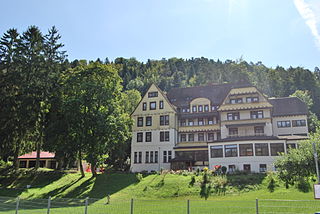
Sulz am Neckar is a town in the district of Rottweil, in Baden-Württemberg, Germany. It is situated on the river Neckar, 22 km north of Rottweil, and 19 km southeast of Freudenstadt.

Dietrich "Dieter" Hrabak was a German Luftwaffe military aviator and wing commander during World War II. Following the war, he became a Generalmajor in the German Air Force of West Germany. As a fighter ace, he claimed 125 enemy aircraft shot down in over 1000 combat missions. The majority of his aerial victories were claimed over the Eastern Front with 16 claims over the Western Allies.

Horst-Günther von Fassong was a German Luftwaffe military aviator and fighter ace during World War II. Depending on source, he is credited between 63 and 136 aerial victories achieved in an unknown number of combat missions. This figure includes up to 90 aerial victories on the Eastern Front, and potentially further 46 victories over the Western Allies, including up to four four-engined bombers.
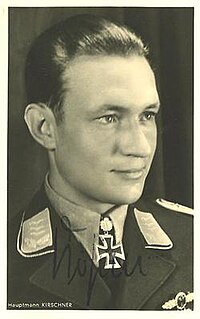
Joachim Kirschner was a German Luftwaffe military aviator and fighter ace during World War II. He is credited with 188 aerial victories achieved in 635 combat missions. This figure includes 168 aerial victories on the Eastern Front, and further 20 victories over the Western Allies, including three heavy bombers.
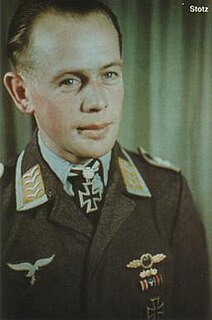
Max Stotz was an Austrian Luftwaffe military aviator during World War II, a fighter ace credited with shooting down 189 enemy aircraft claimed in more than 700 combat missions.
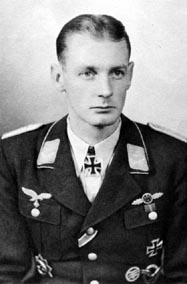
Rudolf "Rudi" Rademacher was a German military aviator who served in the Luftwaffe during World War II. As a fighter ace, he was credited with 97, potentially up to 126, aerial victories—that is, 97 aerial combat encounters resulting in the destruction of the enemy aircraft—claimed in over 500 combat missions. The majority of his victories were claimed over the Eastern Front, with sixteen claims over the Western Front, all of which were achieved while flying the Messerschmitt Me 262 jet fighter.

Josef Zwernemann was a German Luftwaffe military aviator during World War II and a fighter ace credited with 126 enemy aircraft shot down in over 600 combat missions. The majority of his victories were claimed on the Eastern Front, with ten aerial victories claimed over the Western Front during the Battle of Britain and in Defense of the Reich.
The Deutsche Verkehrsfliegerschule (DVS), German Air Transport School, was a covert military-training organization operating as a flying school in Germany. It began during the Weimar Republic in Staaken, Berlin in 1925 and its head office was transferred in 1929 to Broitzem airfield near Braunschweig.
Otto Wessling was a German Luftwaffe military aviator and fighter ace during World War II. He is credited with up to 83 aerial victories achieved in an unknown number of combat missions. This figure includes 55 aerial victories on the Eastern Front, and further claims over the Western Allies, including 15 four-engined bombers.
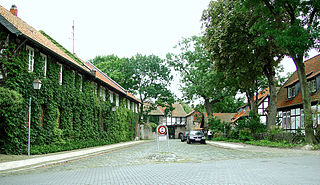
Wabe-Schunter-Beberbach is a Stadtbezirk (borough) in the north-eastern and eastern part of Braunschweig, Germany. The district is named after the river Schunter and its tributaries Wabe and Beberbach.
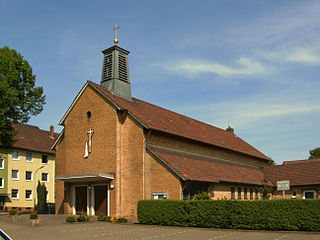
Rüningen is a Stadtbezirk (borough) on the river Oker in the southern part of Braunschweig, Germany.

The following is a timeline of the history of the city of Braunschweig (Brunswick), Germany.























